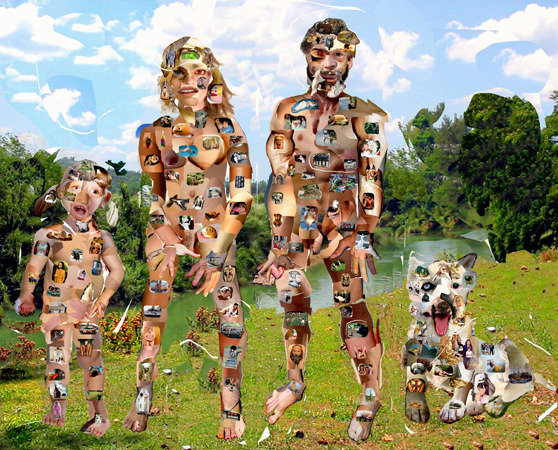Family Portrait
dal 18/10/2012 al 8/12/2012
Segnalato da
Art Club 2000
Olaf Breuning
Louise Bourgeois
Dan Graham
Carol Irving
Mathias Kessler
Dorothea Lange
Servane Mary
Claes Oldenburg
Hans Op de Beeck
18/10/2012
Family Portrait
Carriage trade, New York
While the subject of the family has often been approached within art and portraiture in ways that either emphasize its traditional nature or attempt to counteract this tradition with challenges to its conservative reputation, the emphasis of the exhibition is on the manner in which the family's image has been constructed and maintained over time, and how this might influence the shaping of the political and social spheres of everyday life.

Art Club 2000
Olaf Breuning
Louise Bourgeois
Dan Graham
Carol Irving
Mathias Kessler
Dorothea Lange
Servane Mary
Claes Oldenburg
Hans Op de Beeck
As the subject of An American Family, one of television’s first reality shows, the Loud family exemplified the "Margaret Mead effect" of the mediation of experience, where representation begins to influence behavior. Followed everywhere by cameras for seven months, emotional cracks and fissures developed from the constant surveillance, which peaked when Pat Loud asked her husband for a divorce on TV. Serving as a vehicle to represent and reproduce the values of society, the family is central to its psyche. Through television shows and advertisements, popular culture has combined to represent the family as central to "belonging," a unique group at the core of social obligation and order.
The presumption of social mobility in American society places the family at the center of a set of highly ambiguous class relations. The "classless" nature of democracy implies that the individual may prevail over any obstacle, and is not subject to bias based on background or status. The obsession with social status, on the other hand, suggests that pedigree, even if invented (Pygmalion, Trading Places ) can help one "get ahead," though it might mean jettisoning one’s origins in favor of a new set of values and norms.
Also providing an intimate social structure for individuals without legal or biological links, the family model is replicated in ways that adapt its deep emotional bonds while challenging its moral imperative. The appropriation of the paternal figure as a leader in cult organizations replicates social hierarchies borrowed from family structures, with parallels found in mainstream politics. Ultimately a projection of a kind of dependency of the weaker members on the stronger, the impulse to trust a politician as a parental figure (Mitt Romney’s image seems drawn from a 1950’s sitcom dad) can play an almost unconscious role in campaigns.
Pulled in so many directions, the family is unsurprisingly sometimes represented as torn apart. Exploited for political agendas (the Defense of Marriage Act ) as well as commercial interests (family-centric ads selling security and trust), the family unit is subject to the daily pressures of societal norms. Charged with reinforcing the perennial values which maintain and even "save" it from ever new presumed threats (challenges to gender roles, questions of its social significance) the family is expected to maintain its hegemonic role in providing new, qualified members to participate in the healthy competition that comprises a capitalist democracy. As the original site for narratives of ambition, competition, cooperation, and conflict, "the family" remains unrivaled.
While the subject of the family has often been approached within art and portraiture in ways that either emphasize its traditional nature or attempt to counteract this tradition with challenges to its conservative reputation, the emphasis of the exhibition Family Portrait is on the manner in which the family’s image has been constructed and maintained over time, and how this might influence the shaping of the political and social spheres of everyday life.
Image: Olaf Breuning, Collage Family, 2007, color photograph, 48" x 60", courtesy Metro Pictures
Opens Friday, October 19, 2012, 6-8 pm
Carriage Trade
62 Walker Street New York, NY 10013
Gallery Hours:
Thursday - Saturday, 1-6 pm



